
Residential Indoor Air Quality and Ventilation: Easy Tips for a Fresher Home
Maintaining optimal indoor air quality is essential for ensuring a healthy living environment. Due to growing concerns over pollutants and allergens, it has become increasingly important for homeowners to understand the factors that influence the quality of the air they breathe. This article will explore the crucial role residential ventilation plays in promoting better air quality and how proper management of indoor conditions can significantly improve your family’s health and well-being.
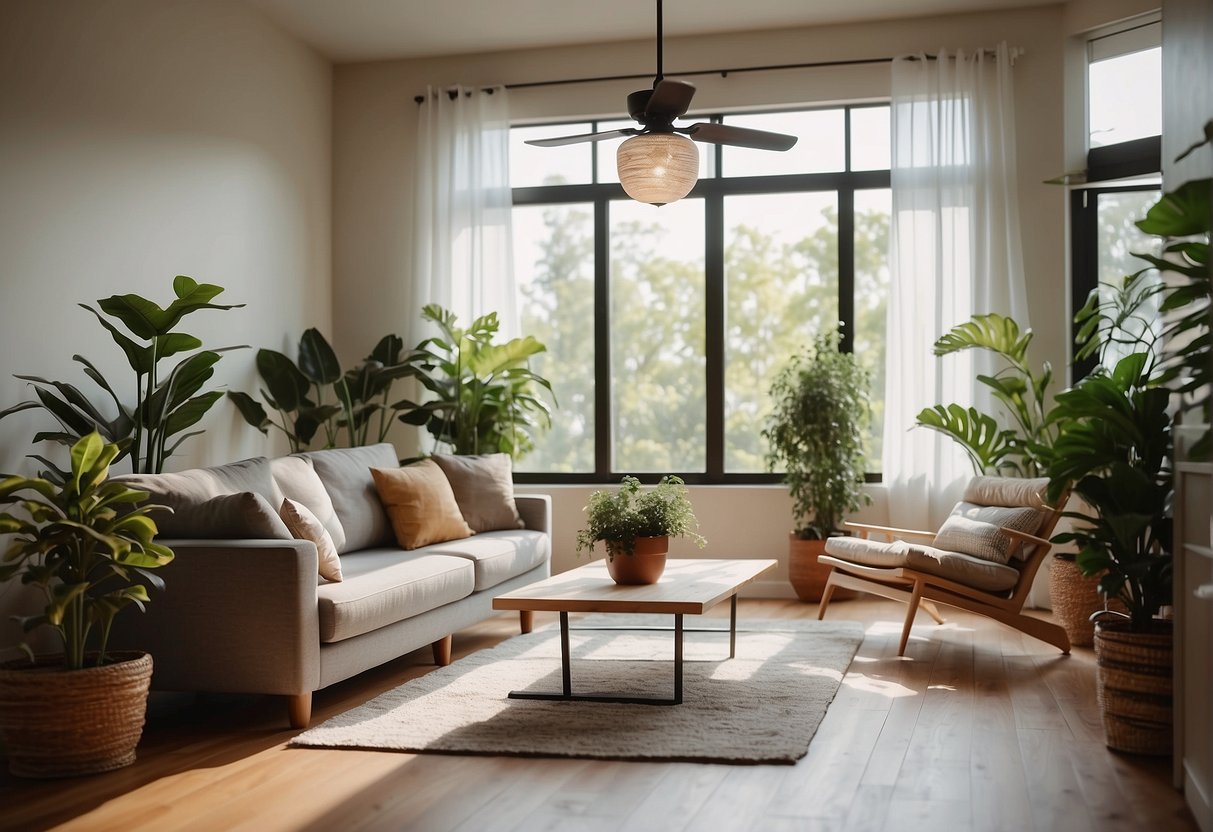
Indoor air quality is influenced by various factors, including outdoor pollution, building materials, household products, and human activity. Understanding the common sources of indoor pollutants can help devise strategies to mitigate their impact on your health. Moreover, the role of ventilation in eliminating these pollutants and maintaining good indoor air quality cannot be overstated.
Optimizing residential ventilation systems is critical for both new and old homes. By focusing on high-risk areas and implementing design considerations that promote adequate airflow, homeowners can effectively manage and minimize health risks associated with indoor air pollution while ensuring energy efficiency.
Key Takeaways from Indoor Air Quality
- Indoor air quality is influenced by various factors, and proper ventilation plays a crucial role in maintaining a healthy living environment.
- Identifying common sources of indoor pollutants and focusing on high-risk areas can help prevent and eliminate indoor air pollution.
- Effective design considerations and ventilation systems in both new and old homes can manage health risks and improve energy efficiency. Learn more about improving indoor air quality.
Understanding Indoor Air Quality
Maintaining good indoor air quality is essential for the well-being and overall health of residents. In this section, we’ll discuss the sources of indoor pollution, the effects of poor air quality on health, and the importance of regulating temperature and humidity for better air quality.
Sources of Indoor Air Pollution
Indoor air pollution can stem from various sources, such as emissions from everyday household items and activities. Common indoor sources include:
- Combustion sources: Gas stoves, cigarette smoke, and fireplaces produce gases and particles.
- Building materials: Asbestos, formaldehyde, and radon can be released from certain materials.
- Household products: Air fresheners, cleaning supplies, and personal care products emit volatile organic compounds (VOCs).
- Mold and mildew: Excess moisture in the home can lead to the growth of mold and mildew.
- Outdoor pollutants: Pollen, dust, and other outdoor pollutants can enter the home through windows and ventilation systems.
By identifying and addressing these sources, residents can take steps to improve the indoor air quality in their homes.
Effects of Poor Air Quality on Health
Poor indoor air quality can cause a range of adverse health effects. Some people are more sensitive to pollutants, including children, the elderly, and those with existing health conditions. Common health effects include:
- Respiratory issues: Asthma triggers, such as mold and dust, can worsen symptoms and cause attacks.
- Allergic reactions: Pollen, pet dander, and dust mites can lead to sneezing, itching, and other allergy symptoms.
- Headaches and dizziness: Exposure to certain pollutants like VOCs and formaldehyde can cause headaches and feelings of dizziness.
- Long-term health risks: Prolonged exposure to radon and asbestos may increase the risk of lung cancer and other serious health issues.
It’s crucial to monitor and address indoor air quality to protect the health of all residents.
Regulating Temperature and Humidity for Air Quality
Maintaining optimal temperature and humidity levels is an essential aspect of ensuring good indoor air quality. Here are some ways to manage these factors:
- Ventilation: Regularly open windows and use exhaust fans to promote the exchange of indoor and outdoor air.
- Dehumidifiers: Use dehumidifiers to maintain relative humidity between 30% and 50%, reducing the risk of mold growth.
- Air conditioning: Set your air conditioner to a comfortable temperature, ideally around 75°F (24°C), to avoid excess humidity and promote air circulation.
- Air purifiers: Utilize air purifiers with HEPA filters to remove particulates and allergens from the air.
By taking these steps, you can create a healthier and more comfortable living environment for all residents.
The Role of Ventilation
When it comes to residential indoor air quality, ventilation plays a crucial role in maintaining a healthy and comfortable living environment. In this section, we’ll explore natural and mechanical ventilation methods, balancing indoor and outdoor air, and the impact of ventilation on our health.
Natural Ventilation Methods
Natural ventilation relies on natural forces like wind and temperature differences to move fresh outdoor air into your home while pushing out indoor air containing pollutants, moisture, and stale air. Some common natural ventilation methods include:
- Infiltration, where outdoor air enters through openings around windows, doors, and other structural gaps
- Window and door opening, specifically designed to encourage air movement through a building
While natural ventilation can be an energy-efficient way to maintain healthy indoor air quality, it might not provide adequate air exchange in all climates or seasons, leading to health risks in certain situations.
Mechanical Ventilation Systems
ASHRAE Standard 62.2 sets minimum ventilation rates for dwelling-unit ventilation, ensuring proper air exchange in homes. Mechanical ventilation systems are designed to meet these rates and provide continuous or intermittent ventilation to suit a home’s needs.
There are several types of mechanical ventilation systems, including:
- Exhaust ventilation systems, which remove air from specific areas like kitchens and bathrooms
- Supply ventilation systems, which deliver fresh air into the living spaces
- Balanced dwelling-unit mechanical ventilation systems, which provide an equal amount of fresh outdoor air for the exhausted indoor air
When designed and installed correctly, these systems ensure adequate indoor air circulation, removing pollutants and controlling moisture levels.
Balancing Indoor and Outdoor Air
Ventilation’s primary aim is to strike a balance between indoor and outdoor air. But too much ventilation can increase energy consumption and make it harder to maintain comfortable indoor temperatures. Therefore, homeowners must find a balance depending on their climate, home design, and preferences.
For instance, in colder climates, excess ventilation can lead to heat loss, whereas in more humid areas, proper ventilation is essential to control moisture levels, minimizing mold growth and structural damage. This balance can be achieved by considering the needs of each room and using the appropriate ventilation method, whether natural or mechanical.
Ventilation and Health
Inadequate ventilation can have serious health effects, such as headaches, dizziness, and respiratory problems. Poor indoor air quality can also lead to the accumulation of harmful compounds like carbon monoxide, volatile organic compounds (VOCs), and allergens.
Balancing both natural and mechanical ventilation systems ensures that occupants receive a continuous supply of fresh air while providing a comfortable living environment. Meeting ASHRAE standards for ventilation rates and considering individual living situations are important steps in ensuring that our homes have good indoor air quality and contribute to a healthier life.
Particular Focus on High-Risk Areas

Kitchens and Cooking Emissions
Kitchens can be a significant source of indoor air pollution, especially when it comes to cooking emissions. Particles and concentrations of various pollutants may increase when using stoves, heaters, and fireplaces. To reduce these emissions and maintain good air quality, it’s essential to consider proper ventilation.
- Exhaust fans: Always use an exhaust fan when cooking. This helps remove particles and other pollutants from the air.
- Gas stoves: Choose high-quality gas stoves with well-functioning burners to minimize emissions.
- Cleanliness: Regularly clean appliances and surfaces in the kitchen to prevent buildup of particles and grease.
Bathrooms and Moisture Control
Bathrooms are prone to increased humidity levels and moisture. Excess moisture can lead to the growth of mold and mildew, both of which can impact indoor air quality. To manage moisture in bathrooms, consider implementing the following measures:
| Activity | Moisture Control Measure |
|---|---|
| Showering | Use an exhaust fan or open a window to release moisture. |
| Drying towels and clothes | Hang items in well-ventilated areas or outdoors (when possible). |
| Cleaning | Regularly clean surfaces and use mildew-resistant materials when possible. |
By focusing on maintaining proper ventilation and moisture control in both kitchens and bathrooms, air quality in residential spaces can be greatly improved.
Preventing and Eliminating Indoor Air Pollution
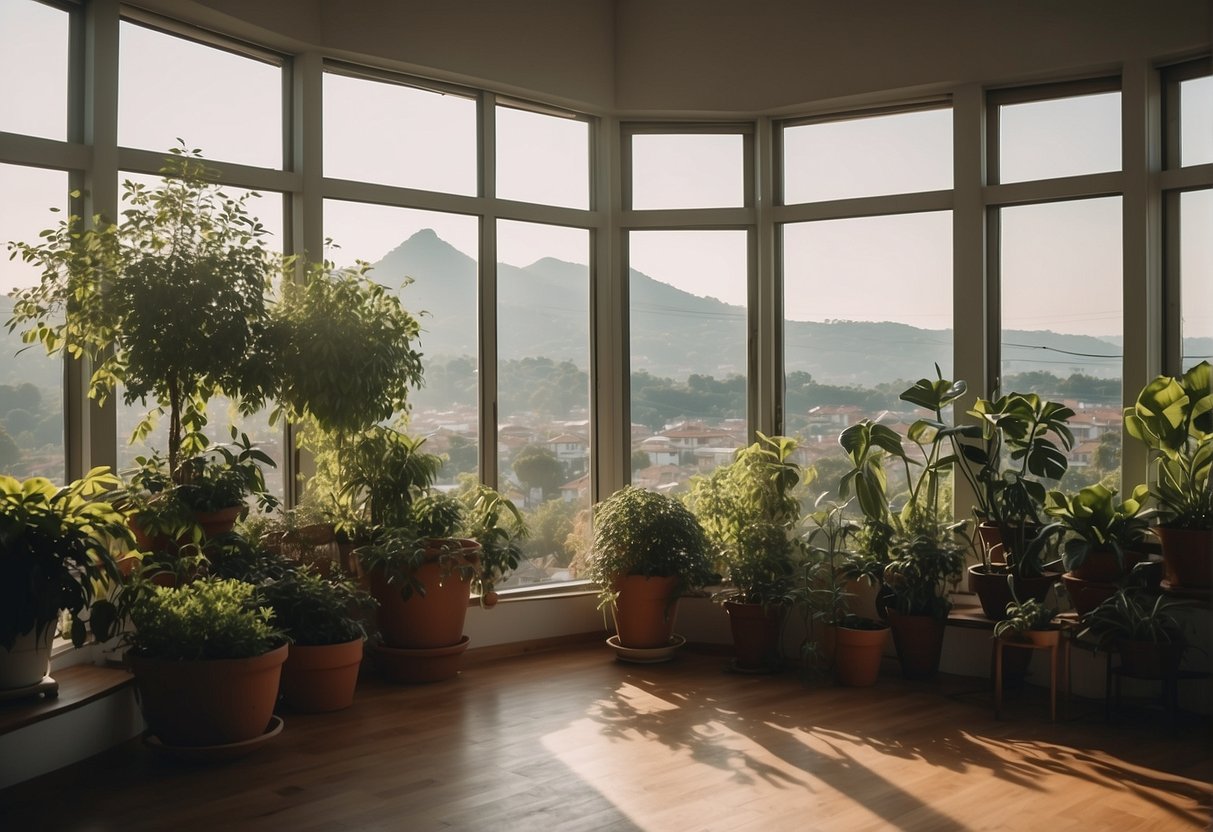
Maintaining good indoor air quality is essential for a healthy living environment. It is crucial to control pollutant sources and improve air filtration to eliminate indoor air pollution. In this section, we will focus on two main strategies: Pollutant Source Control and Improving Air Filtration.
Pollutant Source Control
One of the most effective ways to prevent indoor air pollution is by controlling the sources of pollutants. Here are some methods to achieve this:
Chemicals: Be cautious when using household cleaning products and pesticides, as they can release hazardous compounds into the air. Opt for natural alternatives whenever possible.
Combustion: Gas stoves, fireplaces, and other combustion appliances can emit harmful pollutants. Ensure proper ventilation and consider using energy-efficient appliances to reduce emissions.
Secondhand smoke: Environmental tobacco smoke, also known as secondhand smoke, can drastically affect indoor air quality. Prohibit smoking indoors and ensure proper ventilation when smoking outdoors.
Volatile Organic Compounds (VOCs): These compounds can be emitted from various products such as paints, adhesives, and building materials. Choose low-VOC and water-based products to minimize exposure.
Improving Air Filtration
Effective air filtration can reduce the concentration of pollutants in the indoor environment. Here are some tips on improving air filtration:
Air cleaners: Invest in good quality air purifiers with HEPA filters. These devices can filter out many different types of pollutants like VOCs, allergens, and traditional dust particles.
Regular maintenance: Clean or replace filters in air conditioners, heaters, and air purifiers regularly to maintain their efficiency.
Particle removal: Implement a proper and regular cleaning routine to remove dust, pet dander, and pollen. Vacuum carpets, mop floors, and dust surfaces frequently.
Using these strategies for Pollutant Source Control and Improving Air Filtration can significantly reduce indoor air pollution and create a healthier living environment.
Design Considerations for New and Old Homes
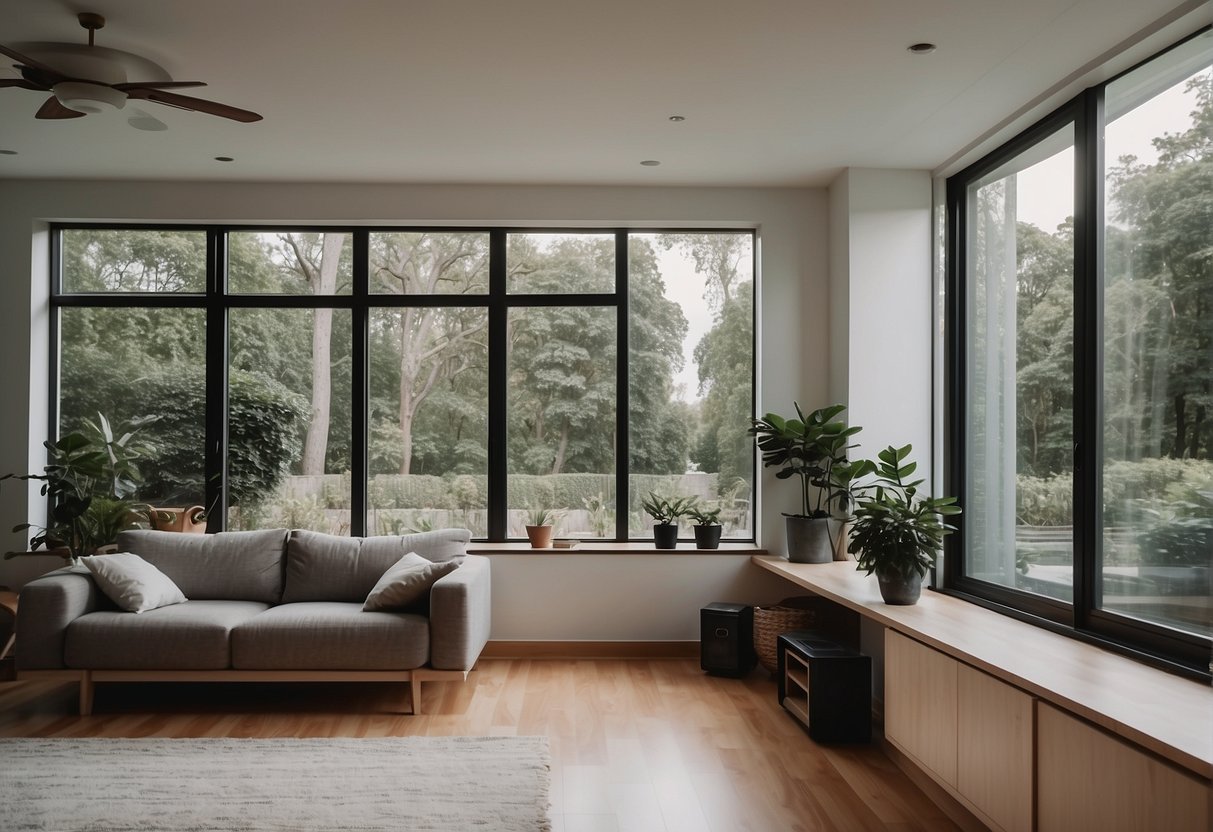
Ventilation in New Home Construction
When building a new home, it’s crucial to consider the air exchange rate and ensure proper ventilation. This is particularly important for attached dwelling units, such as apartments, where building occupants share common spaces. Good indoor air quality is essential for human occupants’ well-being and health.
Some key factors for new residential buildings:
- Building envelope: Sealing the structure from the outside is critical to avoid drafts and improve energy efficiency. However, this approach can trap indoor pollutants, making ventilation more necessary.
- Compartmentalization requirements: Ensuring each unit has its own separated ventilation system reduces the transfer of pollutants between spaces.
- Create a balanced ventilation system, combining exhaust and supply fans. This provides the right balance of air exchange to maintain comfort and air quality.
Renovating for Better Air Quality
When it comes to old homes or remodeling, improving indoor air quality is often overlooked. Here are some tips for renovating residential buildings with better air quality in mind:
- Inspect and clean: Check air ducts, vents, and HVAC equipment for mold, dust, and debris.
- Upgrade HVAC system: Consider replacing outdated air conditioning and heating systems to improve energy efficiency and air circulation.
- Improve airflow: Open up living spaces, or add windows and skylights to allow more fresh air to circulate.
- Choose eco-friendly materials: Opt for low-VOC paints, adhesives, and flooring materials to reduce chemical off-gassing.
- Air purifiers: Install air purifiers to assist in removing pollutants and allergens from the indoor environment.
Whether building a new home or renovating an old one, keeping the well-being of the building occupants in mind when making design decisions will result in a healthier, more comfortable living space.
Managing Health Risks from Indoor Air Pollutants
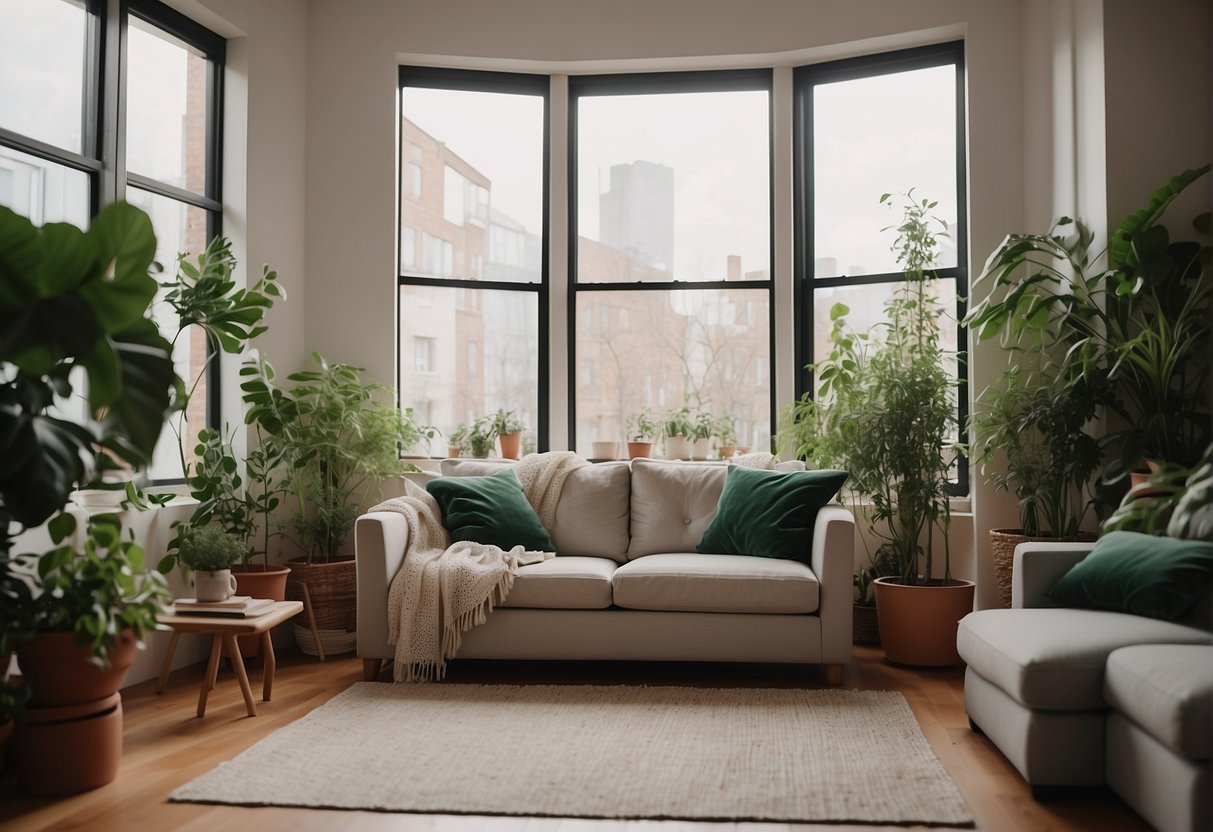
Indoor air quality is an essential factor to consider for maintaining a healthy living environment. By understanding the health risks associated with indoor air pollutants, one can take action to effectively manage and minimize these hazards.
Immediate and Long-Term Health Impacts
Indoor air pollutants can cause immediate and long-term health effects on residents. Immediate effects, such as headaches, dizziness, and irritation of the eyes, nose, and throat, may be experienced after single or short-term exposure. On the other hand, long-term exposure can lead to severe health problems including respiratory diseases, heart disease, and even cancer.
Some common indoor air pollutants and their associated health effects are:
- Mold and biological contaminants: Exposure to mold and other biological pollutants may lead to allergies, asthma, and other respiratory diseases.
- Radon: A tasteless, odorless radioactive gas; prolonged exposure can increase the risk of lung cancer.
- Lead: Particularly dangerous for children; may cause nervous system damage and learning difficulties.
- Asbestos: Prolonged exposure may lead to lung cancer and mesothelioma.
- Nitrogen dioxide: Mainly produced by gas stoves and heaters; may cause respiratory problems and increase the risk of respiratory infections.
- Secondhand smoke: Can cause respiratory illnesses, heart disease, and lung cancer.
- Formaldehyde: Found in pressed wood products, such as particleboard; may lead to irritation of the eyes, nose, and throat, and may increase the risk of cancer in high concentrations.
Targeting Specific Airborne Hazards
Managing indoor air pollution requires targeting specific airborne hazards present in the living space. A few simple strategies may include:
- Regularly inspect and maintain heating systems, chimneys, and appliances to ensure proper functioning and minimize hazardous emissions.
- Control humidity levels to prevent mold growth, using dehumidifiers if necessary, and ensure proper ventilation throughout the living space.
- Test for radon and take appropriate actions, such as sealing cracks or installing radon mitigation systems, if elevated levels are detected.
- If lead or asbestos is suspected in the home, consult a professional to inspect and remove the hazardous materials safely.
- Opt for low-emission pressed wood products when renovating or purchasing new furniture to minimize formaldehyde emissions.
- Eliminate smoking indoors to significantly reduce the risk of exposure to secondhand smoke.
Ultimately, maintaining an awareness of possible indoor air contaminants and proactively addressing them will help create a safer and healthier living environment for everyone.
Ventilation and Energy Efficiency
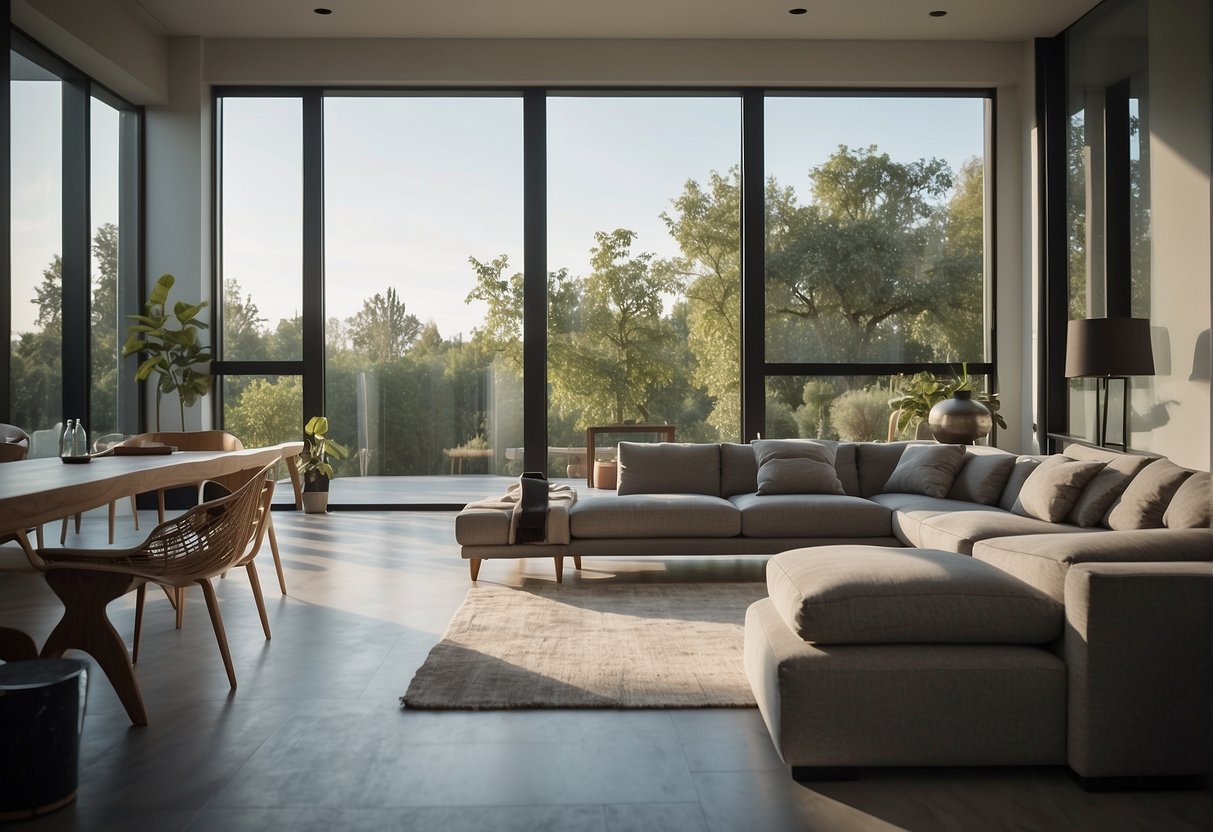
Balancing Air Quality with Energy Costs
Improving indoor air quality is vital for a healthy living environment, but it can also increase energy costs. Traditional ventilation methods, like opening windows or using bathroom or kitchen fans, can lead to higher heating and cooling expenses. Essentially, you’re paying to warm or cool the outside air that enters your home. Fortunately, homeowners can balance air quality with energy efficiency by choosing smart ventilation systems.
One solution is incorporating energy-efficient heat recovery ventilators (HRVs) within mechanical systems. These devices can either be integrated into heating and cooling systems such as forced air heating systems or installed separately. HRVs work by exchanging the heat between indoor and outdoor air, minimizing energy loss while maintaining fresh air supply.
Advanced Ventilation Technologies
There’s more to energy-efficient ventilation than HRVs. Here’s a quick rundown of some advanced ventilation technologies:
- Demand-controlled ventilation (DCV): DCVs use sensors to monitor air quality and adjust ventilation rates accordingly. Instead of constant operation, they only kick in when necessary, which leads to lower energy costs.
- Energy recovery ventilators (ERVs): Similar to HRVs, ERVs also transfer humidity, reducing the strain on air conditioning units in humid climates.
- Smart ventilation systems: With integrated sensors and algorithms, these systems analyze air quality and optimize ventilation settings automatically. They can be programmed to operate during off-peak hours to save energy costs.
| Ventilation Technology | Energy Savings | Benefits |
|---|---|---|
| Heat Recovery Ventilators | ✅ | Minimizes energy loss |
| Demand-Controlled Systems | ✅ | Adjusts ventilation rates as needed |
| Energy Recovery Ventilators | ✅ | Transfers heat and humidity |
| Smart Ventilation Systems | ✅ | Monitors and optimizes settings |
In conclusion, improving residential indoor air quality is essential, but it doesn’t have to come at the expense of energy efficiency. By investing in advanced ventilation technologies, homeowners can enjoy a healthier living environment without breaking the bank on energy costs.
Activities and Behaviors Affecting Indoor Air
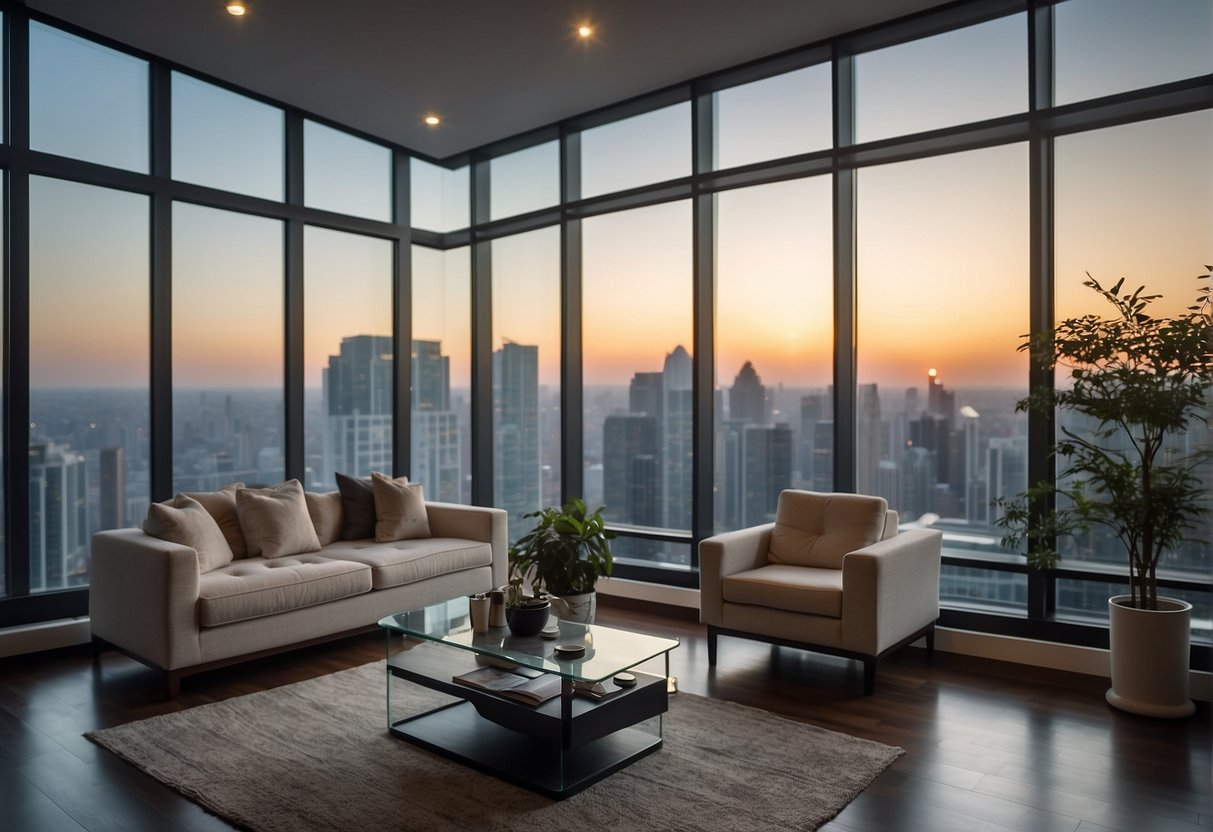
Household Activities and Pollutant Release
Various household activities can release pollutants into the air, affecting indoor air quality. For example, painting can release volatile organic compounds (VOCs), while sanding or paint stripping may release fine dust particles. Additionally, using kerosene heaters can emit harmful pollutants such as nitrogen dioxide and carbon monoxide.
Short-term activities like cooking can generate smoke, which can decrease the indoor air quality temporarily. Maintaining proper indoor temperatures and ventilation can help mitigate these effects.
Occupational and Hobby-Related Exposures
Many occupations and hobbies can also affect indoor air quality. For instance, welding and soldering can produce harmful fumes and gases. It’s essential for individuals engaging in such activities to have proper ventilation to minimize exposure to these pollutants.
Here’s a brief summary table of the discussed pollutant sources:
| Pollutant Source | Examples | Pollutants |
|---|---|---|
| Household Activities | Painting, Sanding, Kerosene Heaters | VOCs, Dust, Nitrogen Dioxide, Carbon Monoxide |
| Occupational/Hobby | Welding, Soldering | Fumes, Gases |
It is crucial for individuals to be aware of the potential sources of indoor pollutants in their homes and workplaces. Taking the necessary precautions, such as proper ventilation and pollutant source control, can lead to healthier indoor air quality.
eLuxury Specialist at McGraw Realtors
With a diverse background, including a career as an Air Force fighter pilot and entrepreneurship, Bill transitioned to real estate in 1995. Co-founding Paradigm Realty with his wife, Charlene, he quickly rose to prominence in Oklahoma City’s luxury real estate scene. Now, as one of the top agents with annual sales surpassing $20 million, Bill’s dedication to exceptional service remains unparalleled. With a legacy spanning over two decades in the industry, Bill’s expertise and commitment make him a trusted name in luxury real estate.